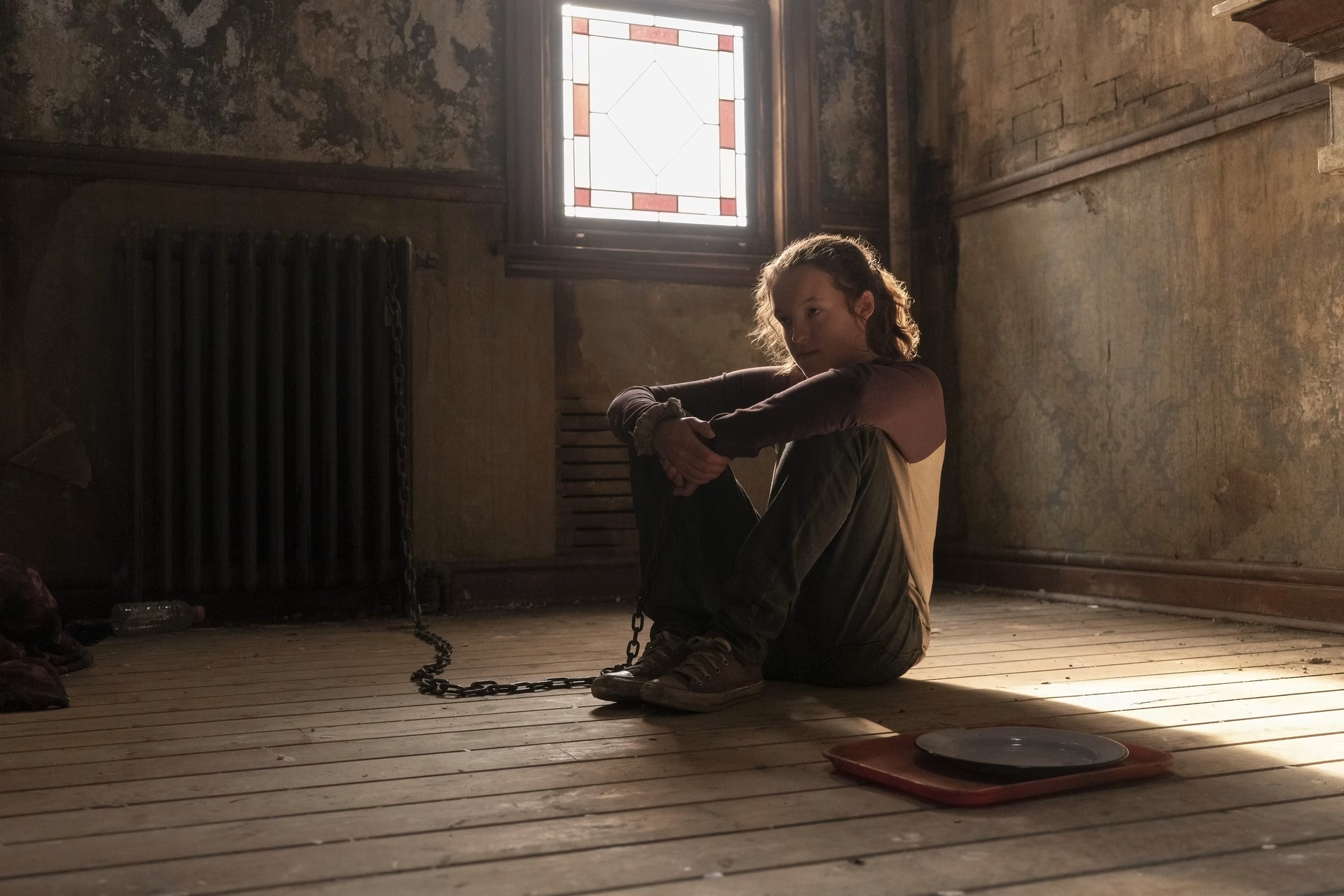The Last of Us may be the most unsurprising video game adaptation ever; after all, the 2013 PS3 title explicitly tries to not be a video game for much of its running time, one of many modern attempts to blur the lines between popular mediums – in what now feels like predictable ways, but still felt fresh when Insomniac’s iconic action-adventure game hit the scene a decade-plus ago. A conflicted protagonist, a bleak, well-realized world – and of course, oodles and oodles of aesthetic style mostly unseen in video games at the time, accentuated by incredibly effective jump cuts and Gustavo Santaolalla’s infectious, emotional score. Its cinematic qualities were often at its odds of being a video game, though; watching The Last of Us was often more fun than playing The Last of Us, a cover shooter with some nifty crafting mechanics and occasionally clumsy combat.
They always felt like two separate entities; The Last of Us, the game, where Joel can see outlines of people through walls and can craft items while running around in circles, and The Last of Us, the script that so nakedly wanted to be anything but a video game, full of conflicted morals, richly defined characters, and a bleakness that other zombie-adjacent media of time could only hope to aspire to (every scene and plot twist in The Last of Us is like The Walking Dead‘s Negan with his baseball bat, in a way). It wanted to be something – and for that, it was lauded in ways that were both deserved and wildly overblown.
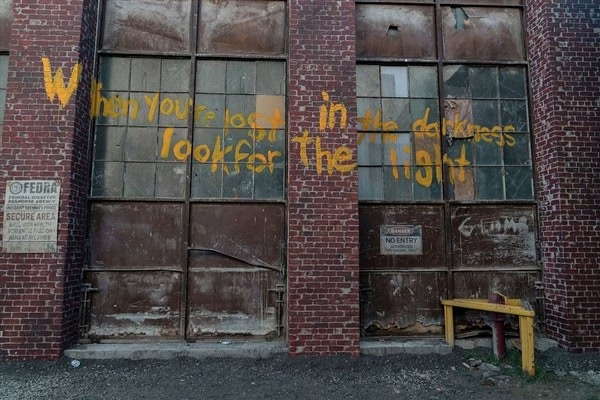
Those cinematic aspirations made it pretty obvious an adaptation was an inevitability; and with “When You’re Lost in the Darkness”, The Last of Us arrives with a near beat-for-beat recreation of the opening hours of the game, in all its tribalistic, dour post-apocalyptic glory, in what sometimes feels like a collection of screenshots brought to life. To call it safe would be an understatement; but given how familiar the structure of the source material’s opening hours are anyway, it’s not a complete surprise the series isn’t taking any big, new swings with its live-action debut.
Of course, since it is a prestige zombie-adjacent story, The Last of Us must begin in the ‘Just Before Times’, where we are introduced to widowed father Joel (Pedro Pascal, grunting his way through a solid American accent) and his daughter Sarah (Nico Parker), on the day the world fell victim to a brain-infecting fungus. 2003 Joel is hard working (to a fault), a loving father clearly keeping depression at bay by keeping his hands constantly busy, raising a daughter who is already more mature than him (stop me if you’ve heard this one before… even 2025 procedurals like Doc crib from this archetype a bit).
From the beginning of Joel’s ill-fated 36th birthday to the episode’s closing shot 20 years (and 90 minutes) later, The Last of Us is almost aggressively competent, both in its application of familiar genre tropes and its (sometimes annoying) imitation of the game’s now-iconic opening scenes. Joel’s watch, Sarah’s innocence, his best friend Tommy’s (Gabriel Luna) frantic driving around town as things begin going to shit… it’s all there, delivered by director Craig Mazin (in a script from him and OG writer Neil Druckmann) in decidedly straightforward fashion – in fact, the only thing missing is the semi-constant ping of Playstation trophies, and death screens when I walk into the goddamn flashlight beam for the 14th time in a row.
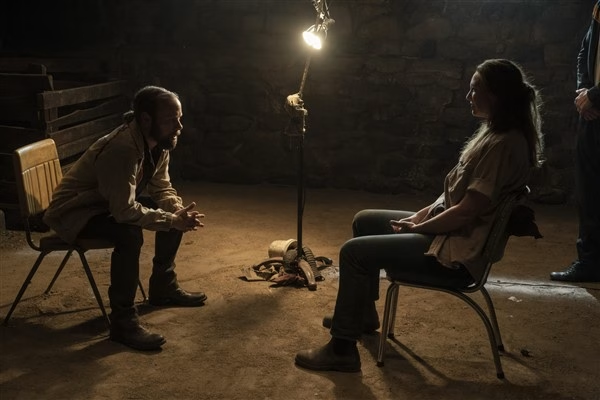
For better or worse, much of The Last of Us‘s visual panache comes from its most familiar imagery; the feeble old lady empowered by the virus, the sight of someone chewing off another’s face, panicked handheld shots forcing the perspective of its protagonists (here in the form of some very blurry, shaky scenes inside Tommy’s truck as the end of civilization begins)… and of course, a few gorgeous shots detailing nature’s attempts to reclaim its land from the dead world built upon it. Every ounce of The Last of Us‘s imagery and ideas are played safe and close to the chest – which, for anyone who knows where this story heads, is at least a little bit disappointing.
If you couldn’t tell by the dead daughter twist mid-episode (shot by a rather heartless member of the military while the Millers tried to escape), or subsequent subplot around people dying over a useless car battery, The Last of Us prescribes to The Walking Dead‘s “humanity will always be the worst version of itself” with its characters and setting – which, if they adhere to it through the events of both video games, is going to lead to a lot of potentially alienating, emotionally draining moments. The Last of Us is a cascade of tragedy and anger, a cacophonous dungeon of bitterness and regret, all filtered through Joel’s utterly broken worldview. Save for the occasional joke offered through gritted teeth, The Last of Us is unsubtly relentless in its bleakness – which it certainly embodies with its introduction to 2023 Boston, where Joel the Pill Pusher solemnly drinks and his gruff, bruised partner Tess (Anna Torv) walks around talking shit to people that have taken her hostage, in a way only people who’ve survived unspeakable things can do.
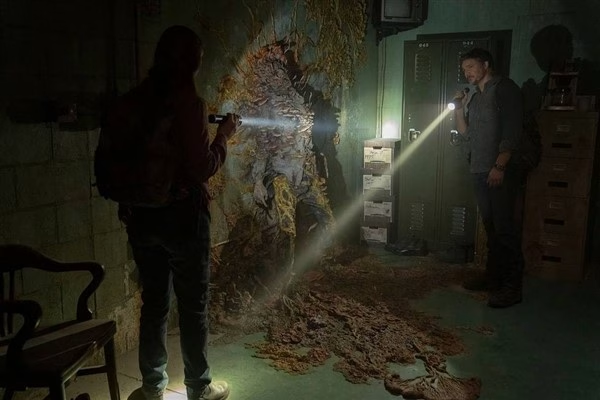
Of course, Ellie (Bella Ramsey) is really the character at the epicenter of The Last of Us‘s story (and mystery), but it takes a bit of a winding path for “When You’re Lost in the Darkness” to get her and Joel in the same room for the first time. So long so that it’s hard for the pilot to give a good sense of who Ellie is beyond “angsty teen who has a knife” in her few opening scenes, all of which are used to introduce us to Marlene, the Fireflies, and their resistance to the presence of FEDRA (essentially, the authoritarian remnants of the US military structure) – all of which may or may not be related to Tommy’s disappearance, the initial catalyst for Joel’s reluctant road trip.
The rough sketch offered for Ellie in the second half is mirrored by Sarah’s presence in the first; but Sarah’s 15 on-screen minutes feel like nothing but a (well-acted and delivered) preamble, a nakedly brief, violent reminder that nobody in this world gets a happy ending, or even the chance to remotely enjoy the hours when the sun is down. The Last of Us, for all its praise, is not a subtle story; without developing some dimensionality to the straightforward regurgitation of these stories in the pilot, The Last of Us‘s first hour certainly raises questions if its emotional and narrative stake will translate neatly to film, especially as it digs further into Joel’s psyche – and as the show continues, Ellie’s.
Some of this is by design, of course – the pilot roughly covers the first two hours of the game, where Ellie barely factors in and Joel is mostly focused on finding Tommy (Gabriel Luna). But in the interest of mystery, “When You’re Lost in the Darkness” betrays the simplicity of the narrative and its moral ethos a bit, in a way that the game (with its interspersed gameplay sections – and by nature of players controlling characters, giving a sense of authorial control), could often cover up a bit more, especially early on.
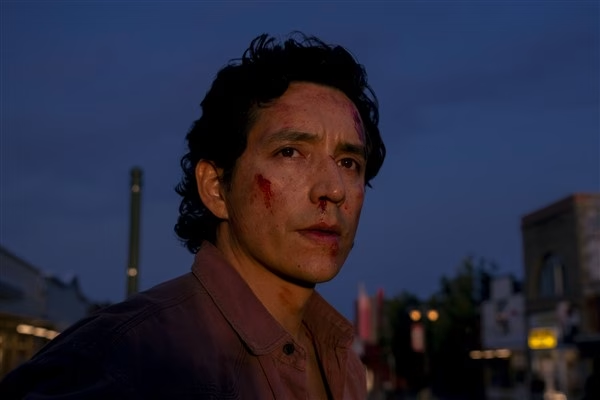
It would be wrong to project what The Last of Us could be as a television series; what “When You’re Lost in Darkness” is still a solid pilot, 80 minutes effectively portraying a world that’s descended into absolute nihilistic nothingness. However, in that translation from pre-rendered polygons to live images, The Last of Us‘s hollow, one-dimensional sense of humanity is unfortunately preserved – which, like its protagonist, is unrelenting in its willingness to be bleak and detached, burying its humanity in the pursuit of some self-righteous sense of purpose – or in most cases, simply for the sake of survival.
Early pacing issues and general lack of originality aside, “When You’re Lost in Darkness” is a proficient introduction to the world of Fireflies, QZ’s, and sad pill-peddlers taking ill-advised cross-country trips. There’s still plenty of time for The Last of Us to develop its own sense of identity and use the source material as a launching pad rather than a strict blueprint; however, “When You’re Lost in the Darkness” takes its source material and produces exactly the flashy, bleak pilot you’d expect it to be. Its impregnable attachment to the familiar makes for a bit of an underwhelming start – and could make for a really divisive season of television, should it remain as inflexible through the entirety of its first season.
Grade: B
Other thoughts/observations:
- welcome to The Last of Us reviews! With season two premiering on April 13 (which I’ll have episodic coverage of), I will be running updated and remastered versions of my original 2023 reviews (RIP Tilt Magazine) for each of the first season’s nine episodes.
Discover more from Processed Media
Subscribe to get the latest posts sent to your email.

